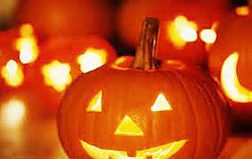Simple tips to keep Halloween safe
Published 2:11 pm Tuesday, October 28, 2014
Halloween offers so much fun, but it does come with hidden fire dangers that can be truly scary.
In a recent five-year study, NFPA discovered decorations were the first items to be ignited in an estimated average of 1,000 reported home structure fires per year.
These fires caused per year average of six civilian deaths, 53 civilian injuries and $16 million in direct property damage.
Nearly half of these decoration fires occurred because the decorations were too close to a heat source. 41 percent of these incidents were started by candles; and one-fifth began in the living room, family room or den.
Fortunately, by following some simple safety precautions, you can ensure a day of safe fun for your family and trick-or-treaters.
The following safety tips were provided by NFPA to keep everyone safe this Halloween:
• When choosing a costume, stay away from billowing or long trailing fabric. If you are making your own costume, choose material that won’t easily ignite if it comes into contact with heat or flame. If your child is wearing a mask, make sure the eye holes are large enough so they can clearly see out of them. Be sure they know how to stop, drop and roll if their clothing catches fire.
• Dried flowers, cornstalks and crepe paper are highly flammable. Keep these and other decorations well away from all open flames and heat sources, including light bulbs and heaters.
• Use flashlights or solar powered landscape lighting instead of candles or torches for decorating walkways and yards. These alternatives are safer for trick-or-treaters, whose costumes may brush against the lighting.
• It is safest to use a glow stick or battery-operated candle in a jack-o-lantern. If you use a real candle, use extreme caution. When lighting candles inside jack-o-lanterns, use long fireplace-style matches or a utility lighter. If you choose to use candle decorations, make sure to keep them well attended at all times.
• Remember to keep exits clear of decorations, so nothing blocks escape routes. If your or your children are attending a Halloween party, make note of all exits. Always know two ways out.
Safety officials also remind motorists to celebrate responsibly and watch for pedestrians.
Halloween has become one of the most popular holidays for children and adults. However, the combination of trick-or-treaters and adult celebrations involving alcohol can make Halloween an especially dangerous holiday for motorists and pedestrians alike.
This year, with Halloween falling on a Friday, safety advocates are particularly concerned about one of the biggest threats to safety: Drinking and driving.
Last year in Louisiana, 12 people were killed and 1,060 were injured in crashes over the five-day period that included Halloween.
Seven of the 12 fatalities involved alcohol. During the entire month of October, 10 pedestrians were killed in crashes.
“The fact that Halloween coincides with a weekend will give more people the flexibility to attend social gatherings they might not otherwise attend on a school or work night,” said Lt. Col. John LeBlanc, executive director of the Louisiana Highway Safety Commission. “We want people to enjoy themselves, but if they’re drinking, it’s crucial that they find a sober ride home.
“And, we can’t forget what’s at the heart of Halloween celebrations: costumed children. With all of the excited trick-or-treaters running from house to house in the dark, it’s even more important that drivers proceed with caution, especially through neighborhoods.”
LeBlanc offered these tips:
• Designate a sober driver before the party starts. Never drive impaired.
• If you are impaired and didn’t designate a sober driver, take a taxi, call a sober friend or family member, or use public transportation.
• Walking impaired can be just as dangerous as drunk driving, especially on Halloween. In 2012, 19 percent of the fatal pedestrian crashes in the U.S. on Halloween involved drunk drivers. Designate a sober friend to walk you home.
• If you see a drunk driver on the road, contact local law enforcement.
• If you know someone who is about to drive, take their keys and help them make safe travel arrangements.






